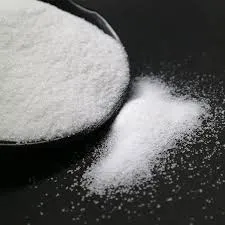Chemicals Used in Drinking Water Treatment Ensuring Safe and Clean Water for All
Access to clean and safe drinking water is essential for public health, making the process of water treatment a critical task for municipalities and water authorities worldwide. Various chemicals are employed throughout the treatment process to ensure that water is free from contaminants and safe for human consumption. This article explores the primary chemicals used in drinking water treatment, their functions, and their significance in maintaining water quality.
1. Coagulants
Coagulation is often the first step in the water treatment process, aimed at removing suspended particles and turbidity from the water. Coagulants, such as aluminum sulfate (alum) and ferric chloride, are commonly used to destabilize suspended particles, allowing them to clump together into larger aggregates known as flocs. This process facilitates easier removal during subsequent filtration. Proper dosage and mixing are essential to ensure effective coagulation and to minimize residual chemicals in the treated water.
2. Flocculants
Following coagulation, flocculation enhances the formation of flocs, making them larger and more manageable for removal. Flocculants, often synthetic organic polymers, are added to aid in this process. They work by promoting the aggregation of smaller particles into larger ones, enabling more efficient sedimentation and filtration. The use of flocculants helps reduce the overall chemical footprint of the treatment process by enhancing the efficiency of solid removal.
3. Disinfectants
Disinfection is a crucial step in water treatment, aimed at eliminating pathogenic microorganisms that can cause diseases in humans. Chlorine is one of the most widely used disinfectants due to its effectiveness, availability, and relatively low cost. However, the use of chlorine can also create disinfection by-products (DBPs) that may pose health risks. Alternative disinfectants, such as ozone and ultraviolet (UV) light, are increasingly used to mitigate these risks. Ozone is a powerful oxidant that not only disinfects but also helps in the removal of taste and odor compounds. UV light provides a chemical-free method of disinfection, rendering pathogens inactive without altering the chemical composition of the water.
chemicals used in drinking water treatment

4. pH Adjusters
The pH level of drinking water can significantly impact both the treatment process and the safety of the final product. Water that is too acidic or too alkaline can corrode pipes or result in precipitation of minerals. Chemicals such as lime (calcium hydroxide) and sodium carbonate are commonly used to adjust the pH of drinking water to optimum levels. Maintaining appropriate pH levels ensures that the water remains stable and free from undesirable corrosive properties.
5. Fluoride
Fluoride is often added to drinking water supplies to promote dental health and reduce the incidence of cavities. The addition of fluoride to municipal water systems is a common public health measure, supported by organizations such as the World Health Organization (WHO) and the Centers for Disease Control and Prevention (CDC). However, the optimal levels of fluoride must be carefully monitored, as excessive fluoride can lead to dental fluorosis and other health issues.
6. Corrosion Inhibitors
Corrosion can pose significant challenges in drinking water systems, leading to the leaching of metals, such as lead and copper, into the water supply. To combat this, corrosion inhibitors like orthophosphate are added to drinking water. These chemicals work by forming a protective layer on the pipe surfaces, reducing the likelihood of metal leaching and helping maintain water quality.
Conclusion
The use of chemicals in drinking water treatment plays a pivotal role in ensuring that water is safe, clean, and free from harmful contaminants. From coagulants and disinfectants to pH adjusters and corrosion inhibitors, each chemical serves a specific purpose that contributes to the overall efficacy of the water treatment process. As societies continue to prioritize access to clean drinking water, ongoing research and technological advancements will be essential in optimizing these chemical processes and addressing emerging water quality challenges. The goal remains the same to provide every individual with safe drinking water and protect public health for generations to come.

